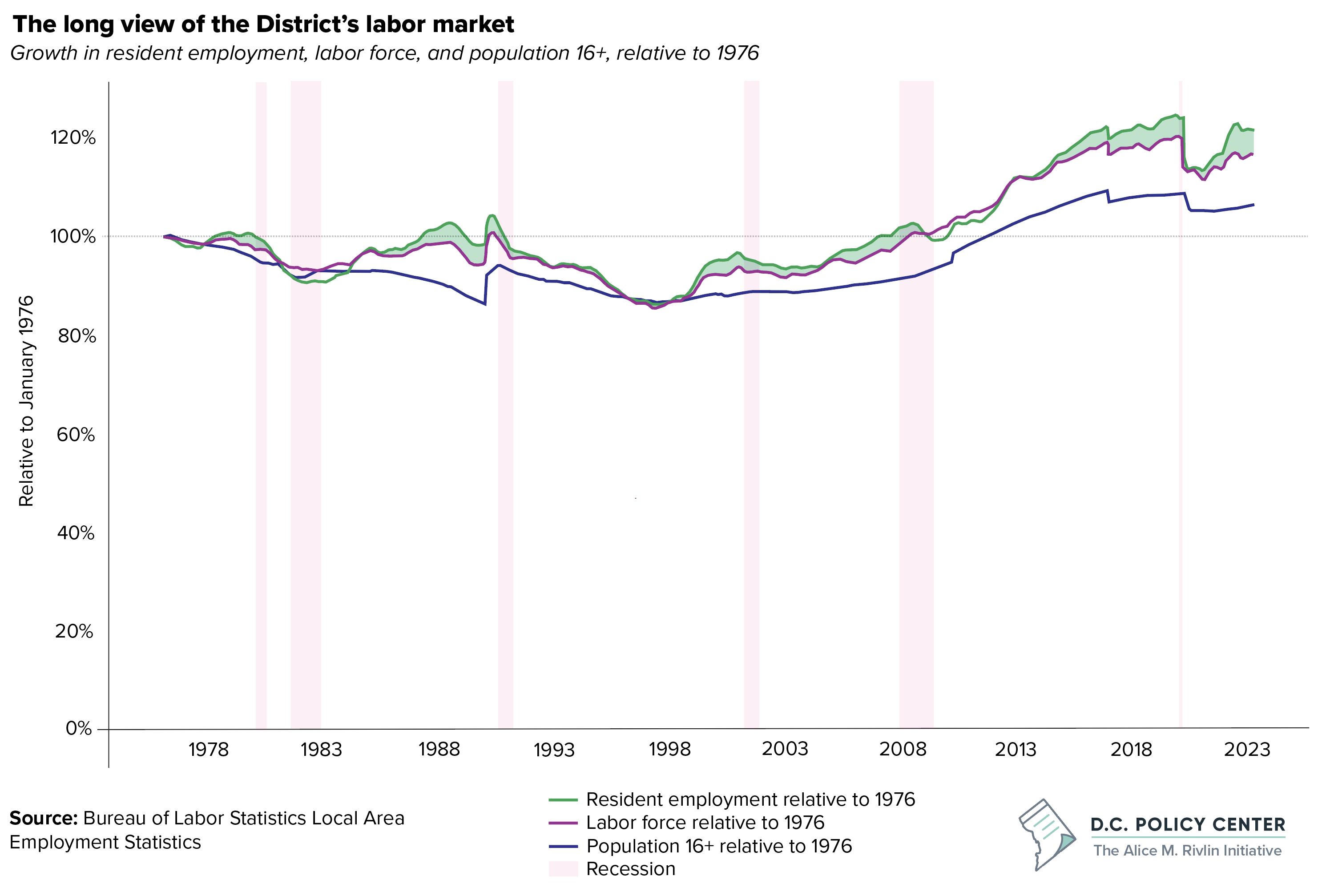For the nearly fifty years since Home Rule—except for a two-year period between 1979 and 1981, the eight-year period prior to the Revitalization Act, and the few months that followed the pandemic—the District’s labor force and resident employment has grown. This happened even during periods when the labor force-eligible population (non-institutionalized residents 16 and older) was declining.
The chart above tracks the growth in resident employment, the labor force, and the labor force-eligible population relative to where they were in 1976. Anywhere you see green shading are the periods when resident employment grew faster than the labor force.
Here are some key takeaways from this long-term view of the District’s labor market:
- At the time of Home Rule, the District was already losing population, including labor-force-eligible population. This loss generally continued until 1998 (the year of the Revitalization Act). Since then, labor-force-eligible population has been growing slowly. It finally returned to its 1976 level at the end of 2011.
- The pre-Revitalization Act declines in resident employment and labor force were particularly deep, but these metrics recovered faster than the labor-force-eligible population. Resident employment returned to its 1976 level in July of 2007, and labor force did the same in mid-2009.
- Outside the two periods that follow the 1981-83 recession and the Great Recession, which officially began in 2007 and ended in 2009, the District’s resident employment grew faster than its labor force. For example, for a period of three years following the end of the Great Recession, the city was attracting new residents who joined the labor force at a rate faster than they found jobs.
- This dynamic changed around 2014, when the growth in resident employment was much stronger than the growth in the labor force. That is, the city was attracting new residents and most of them came already employed. Perhaps they moved because they found a job, or perhaps they already had a job in the region and relocated from the suburbs to the city. Because of this trend, labor participation in the District was its highest level (71 percent of all residents who were 16 or older were in the labor force).
- After the initial impacts of the pandemic, which lead to both job losses, and a lower level of participation in the labor force, we are once again in a period where resident employment is growing much faster than labor force. This is good news. Unfortunately, the limiting factor here is the tepid growth in population, which results in a tight labor market. This is worth keeping an eye on.
